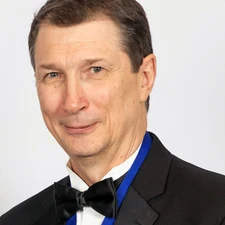Taras Gerya

The 2024 Augustus Love Medal is awarded to Taras Gerya for his novel approach in using computational geodynamics to address outstanding tectonic and geodynamic questions in a way that reaches out to petrologists, geochemists, and structural geologists.
Taras Gerya is originally a petrologist, an unusual academic background for a computational geodynamicist, but one that positioned him to address a wide variety of problems from a more geological perspective. His leadership in and willingness to incorporate evidence and insights from disparate communities has been a game-changer. Taras Gerya is a creative force of nature. He is the author of around 320 papers in international journals, including those considered the most prestigious ones, showing that his scientific impact goes way beyond the boundaries of the community of numerical modellers. For decades, he has gone after big questions in geodynamics, tectonics and petrology, combining cutting-edge method development with a keen eye for geological observations.
Taras Gerya and his colleagues made major contributions to the understanding of lithospheric deformation at different temporal and spatial scales, from earthquakes to mountain building or rifting processes. His continued development of numerical algorithms and codes allowed him and his co-workers to address a range of previously unresolved issues in geodynamics. These include modelling of subduction and continental collision, including exhumation of rocks in the subduction channel and slab break-off; studies on the one-sidedness of subduction; formation of transform faults and dynamics of triple junctions; and cross-scale models of tectonics incorporating seismic cycle timescale processes and fluid transport. Gerya’s work has therefore advanced our understanding of regional geodynamics as well as had significant influence on big-picture debates on global processes such as on the origin of plate tectonics.
Taras Gerya also provided many contributions to the geodynamics community, including his dedication to the scientific review process, and his well-received and influential textbook on numerical geodynamic modelling. This book and its fearless approach to tackling geologically complex problems have helped attract many early career researchers into the field of numerical modelling in tectonics and geodynamics. Taras Gerya shows exceptional human qualities when interacting with his colleagues. Many early career geodynamicists have benefited significantly from the training they received from Taras. To conclude, his efficiency and his generosity have been instrumental in the achievements of the geodynamics community during the last 20 years.
